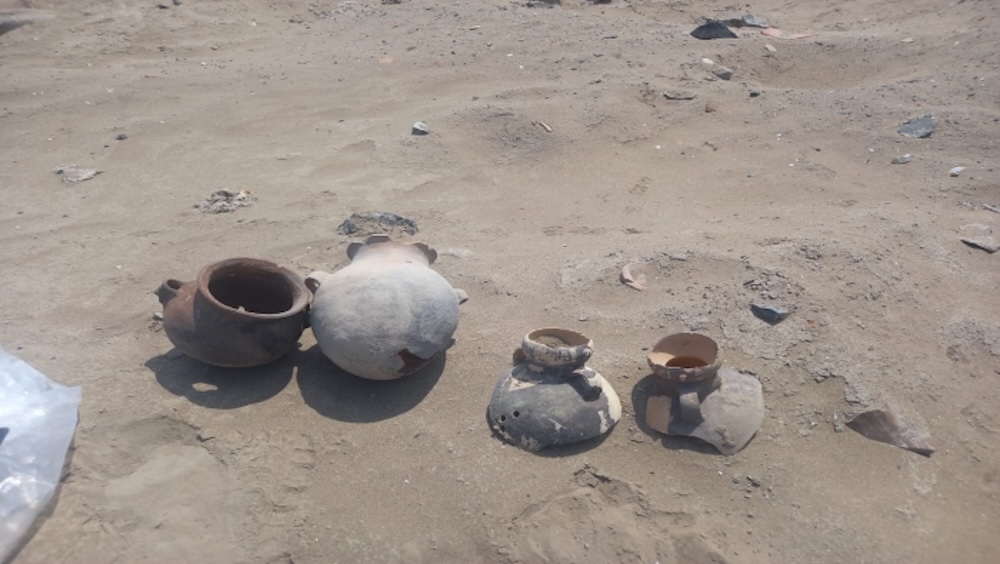Suspected thieves nearly swipe pre-Hispanic artifacts from an archaeological site in Peru
Officials were alerted to the alleged crime and successfully recovered the artifacts.

A suspicious incident at a pre-Hispanic archaeological site in Peru led investigators to discover ceramic vessels crafted centuries ago.
Using an online portal, a citizen alerted Peru's Ministry of Culture that artifacts were being "illicitly" taken, according to a translated statement from the Ministry of Culture.
Upon receiving the news, officials raced to the Lauri archaeological site and the nearby Pampa Libre archaeological site, both of which are north of Lima, to take an inventory of the artifacts and to check for damage.
But in a surprise finding at the Lauri site, the government team discovered 10 never-before-seen artifacts — 10 ceramic vessels, including jugs, pots and plates, likely from the Chancay culture, a pre-Hispanic culture that lived in the area from 1100 to 1450.
Archaeologists determined that the black-and-white vessels, which Chancay artisans created using a molding method, were roughly 600 years old.
Related: 8 pre-Inca mummies and artifacts unearthed just beneath the streets of Lima, Peru
The Chancay have long been lauded for their craftsmanship and often mass-produced pottery and sculptures of humans and animals, which were made using molds and stamps. The group "painted predominantly in dark brown-black on white; the ceramics appear sloppy by comparison with many earlier and contemporary styles," according to the Metropolitan Museum of Art in New York City. "However, the spontaneity of the decoration, the restrained color scheme and the often bold painting lend the Chancay wares considerable charm."
Sign up for the Live Science daily newsletter now
Get the world’s most fascinating discoveries delivered straight to your inbox.
The recovered artifacts were "noticeably deteriorated and in some cases fragmented, due to their exposure to adverse environmental conditions or their violent manipulation," according to the statement. It wasn't clear in the statement whether the artifacts had been damaged before or during the incident.
Theft of artifacts from archaeological sites, known as "huaquero" in parts of Latin America, is relatively common in this region, the statement noted.
The ministry is in the process of transferring the artifacts to its headquarters for further evaluation.
Jennifer Nalewicki is former Live Science staff writer and Salt Lake City-based journalist whose work has been featured in The New York Times, Smithsonian Magazine, Scientific American, Popular Mechanics and more. She covers several science topics from planet Earth to paleontology and archaeology to health and culture. Prior to freelancing, Jennifer held an Editor role at Time Inc. Jennifer has a bachelor's degree in Journalism from The University of Texas at Austin.









